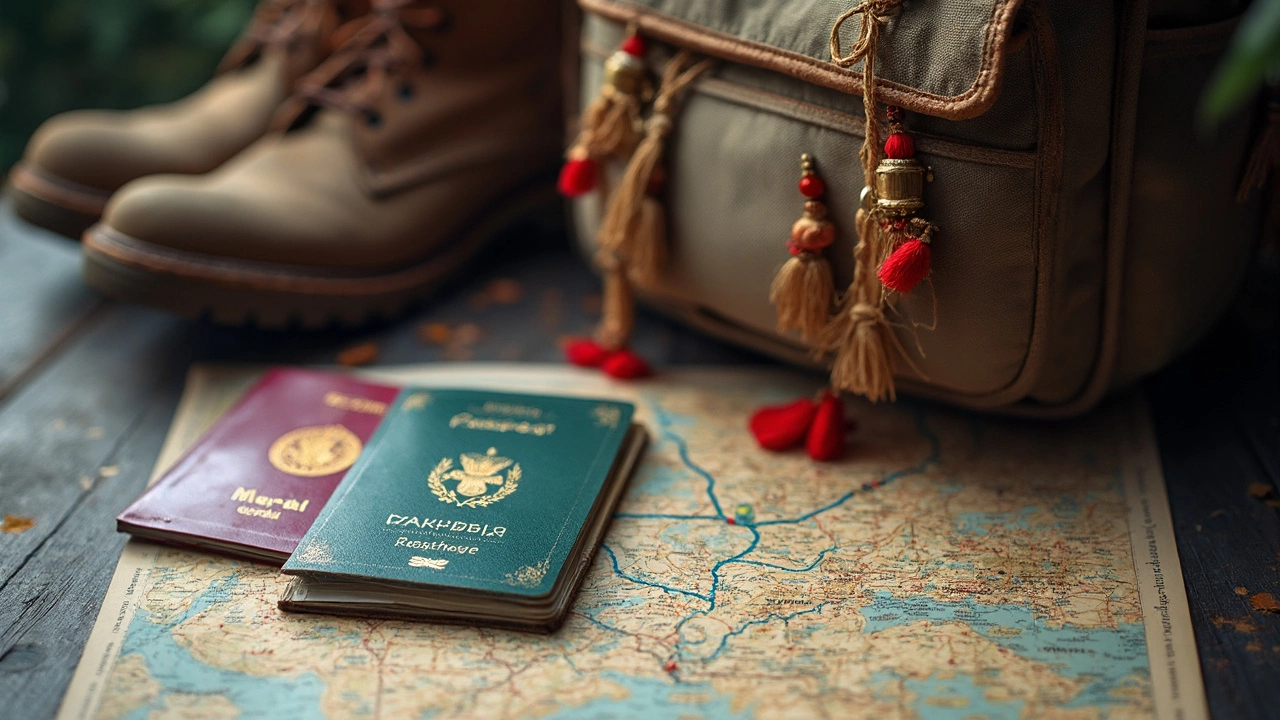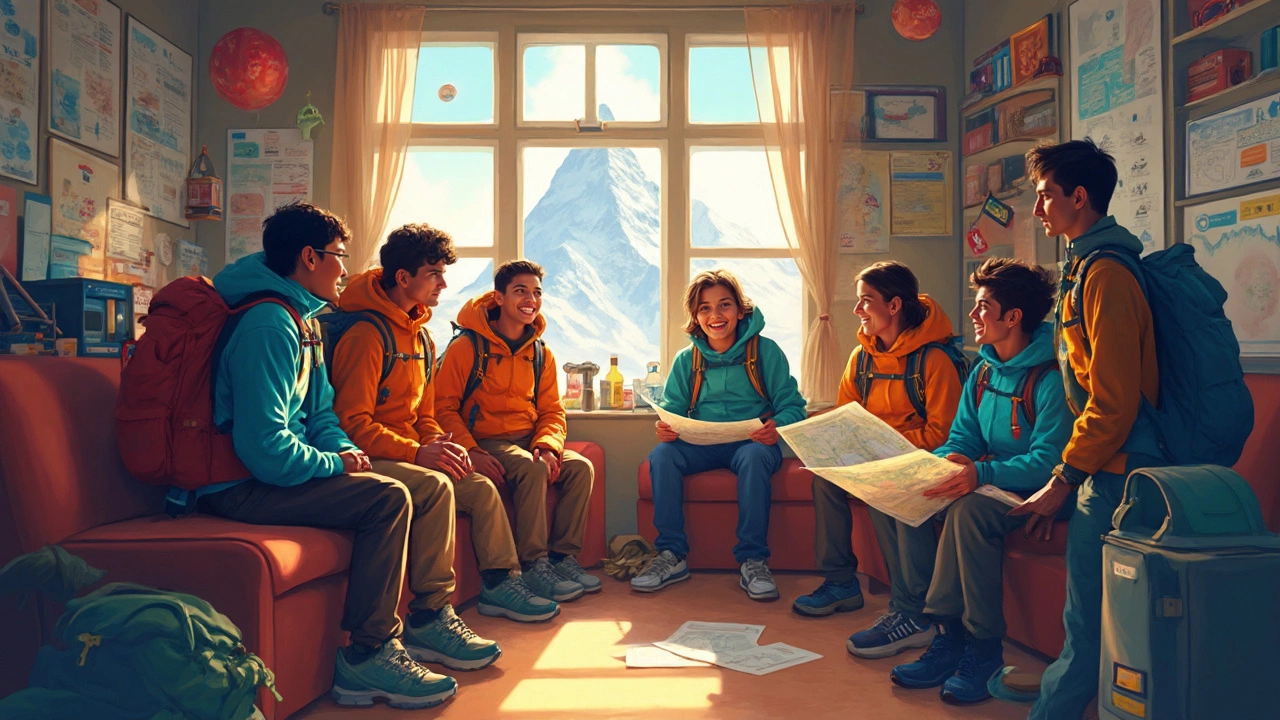Ever wanted to stand at the foot of Mount Everest and wondered if you need a visa just because you're from India? You’re not alone. Every year, tons of Indian trekkers gear up for Everest, and the paperwork puzzle can get confusing fast. Here’s the thing: Indian citizens get some special treatment in Nepal, but there are still some hoops to jump through. It all depends on what part of Everest you’re heading to and how you plan to get there.
First up, don’t mix up visas with permits. Even though Indians don’t usually need a visa to enter Nepal, you still need the right permits to get anywhere near Everest. And yeah, that means you can’t just hop across the border and start trekking. Missing even one permit can get you stopped before you hit your first mountain view—nobody wants that after traveling all this way.
- Do Indians Need a Visa for Everest?
- Permits vs. Visas: What’s Actually Needed
- Crossing to Nepal: How to Get There
- Trekking Tips and Important Rules
Do Indians Need a Visa for Everest?
If you’re heading to Mount Everest from India, good news—Indian citizens do not need a visa to enter Nepal. That’s right, you can cross the border or fly into Kathmandu without going through the typical visa drama that travelers from other countries face. This is thanks to the close relationship and open-border agreement between India and Nepal.
Indians just need a valid ID to get into Nepal. Here are your two main options:
- Valid Indian passport
- Voter ID card issued by the Election Commission of India (the laminated one, not just a plain paper one)
No visa form to fill. No payment at the border. No need to apply in advance. You’ll just have to show your documents at the Nepalese immigration checkpoint or airport counter.
If you’re under 18, things are a bit different. Indian minors need a school ID with a photo and a letter from parents or guardians. Airlines are usually strict, so double-check the latest rules with your carrier before you book.
Here's a quick look at travel documents accepted for Indians going to Nepal:
| Age Group | Accepted Documents |
|---|---|
| 18+ | Passport or Voter ID Card |
| Below 18 | School ID + Parental Authorization |
Bottom line: skip the visa office, but keep those IDs handy. Just remember—getting into Nepal is not the same as getting into the Everest region. You’ll still need trekking permits once you’re in, but the actual visa requirement? That’s one less thing to worry about if you’re an Indian citizen.
Permits vs. Visas: What’s Actually Needed
Visas and permits—sounds similar but totally different game when you're planning a trek to Mount Everest from India. The good news? Indian citizens don’t need a visa to enter Nepal. Yep, that’s thanks to the open border agreement between India and Nepal. All you need is a valid passport or even your voter ID card to cross into Nepal by land or air. But don’t get too comfortable, because just being in Nepal doesn’t mean you’re all set for Everest.
What really matters are the permits. These are non-negotiable for anyone thinking of setting foot near Everest, even if you're not climbing to the summit. If you skip them, the authorities can actually turn you around—not fun after all the effort and anticipation.
- Sagarmatha National Park Permit: This is a must-have if you’re trekking anywhere in the Everest region. You can get it in Kathmandu or at the park entrance (Monjo). The cost is roughly NPR 3,000 (about ₹1,800) for Indians.
- Khumbu Pasang Lhamu Rural Municipality Permit: Introduced a few years ago, this replaces the old TIMS card for the Everest area. It costs NPR 2,000 (roughly ₹1,200) and is only available at entry points like Lukla or Monjo—so no getting this one in Kathmandu.
If you’re aiming for trekking peaks that need climbing gear (like Island Peak or Lobuche), you’ll need an extra permit from the Nepal Mountaineering Association. That’s an extra cost and some more paperwork.
Here’s how the paperwork breaks down for Indians heading to Everest Base Camp:
| Document | Where to Get | Approximate Cost (For Indians) |
|---|---|---|
| Passport or Voter ID | India/Nepal Border, Airport | Free |
| Sagarmatha National Park Permit | Kathmandu/Monjo (Park Entry) | NPR 3,000 (~₹1,800) |
| Khumbu Rural Municipality Permit | Lukla/Monjo | NPR 2,000 (~₹1,200) |
Quick reminder: These prices can change, so check official Nepal tourism sites for the latest before your trip. Skimping on permits can lead to fines or even being sent back, so get your paperwork sorted first thing when you land in Kathmandu. And for the visa? Relax—it’s the permits you really need to worry about when trekking from India to Everest.

Crossing to Nepal: How to Get There
Getting from India to Nepal for your Everest trip is actually pretty hassle-free. There are both land and air routes, so you get to pick what works best for your schedule and budget. Indian citizens don’t need a visa for entry into Nepal—just carry a valid government ID, like your passport or voter ID card. If you’re under 18, make sure you have a school or college ID. That’s usually all you need at the border.
Most folks fly directly to Tribhuvan International Airport in Kathmandu because it’s fast and Kathmandu is the main hub for Everest treks. Round-trip airfare from major Indian cities like Delhi, Kolkata, or Mumbai often costs ₹10,000 to ₹16,000, if you book early enough.
Prefer to go overland? No problem. There are several popular border crossings. The most used are Sunauli–Bhairahawa (near Gorakhpur, UP), Raxaul–Birgunj (in Bihar), and Panitanki–Kakarbhitta (near Siliguri, West Bengal). All have plenty of buses and taxis heading into Nepal. The bus from Delhi to Kathmandu costs about ₹1,500–₹2,400 and usually takes a grueling 30 hours, so flying is way quicker, but ground travel can save you some cash.
- If you’re entering Nepal by road, just show your visa-exempt ID at immigration. Indian vehicles need a permit to drive in Nepal, so check at the border office if you’re road tripping.
- Be ready for some quick bag checks—don’t carry restricted stuff like large electronics, gold, or tobacco in bulk, unless you want a longer chat with border guards.
| Route | Travel Time | Cost (approx) |
|---|---|---|
| Flight (Delhi to Kathmandu) | 1.5 hours | ₹10,000–₹16,000 round-trip |
| Bus (Delhi to Kathmandu) | 30 hours | ₹1,500–₹2,400 |
| Train + Road (Delhi–Gorakhpur–Sunauli–Kathmandu) | 18–24 hours (combined) | ₹1,000–₹2,200 |
Once you’re in Kathmandu, all the Everest trek permits and logistics are handled there. No need to sort it out before you cross the border. The airport and bus stations are full of fellow trekkers, so if you’re ever confused, just ask—someone’s always been in your shoes before.
Trekking Tips and Important Rules
Before you hit the trails toward Everest, a little planning goes a long way. This isn’t your local weekend trek. The conditions, rules, and paperwork are different, and ignoring them can ruin your trip. Let’s cover what you really need to know if you're coming from India.
- Check Permits Early: For Everest Base Camp, you need a TIMS (Trekkers’ Information Management System) card plus two permits: Sagarmatha National Park Entry Permit and the Khumbu Pasang Lhamu Rural Municipality Permit. Get these in Kathmandu or Monjo.
- Keep Your Documents Handy: You’ll need your Aadhaar card or passport for IDs at checkpoints. Nepali officials don’t mess around with paperwork.
- Travel Insurance: Nepal doesn’t demand insurance for Indians, but evacuation by helicopter is expensive and cash-only. Most trips get stuck here—not worth the risk.
- Time Your Trek: Peak trekking seasons are March-May and September-November. September 2023 saw over 20,000 trekkers on the EBC route. Book your teahouses early or risk sleeping in crowded dining halls.
- Altitude Caution: Don’t push yourself. AMS (Acute Mountain Sickness) is real. Plan for acclimatization days—80% of rescued trekkers ignored this and had to be airlifted between Namche and Dingboche, according to Himalayan Rescue Association stats.
Pack wisely for Everest treks. The weather can flip in an hour, dropping from sunny to snow at higher altitudes. Essential gear includes thermal layers, a rain jacket, a down jacket, gloves, UV sunglasses, and basic meds for a headache or cold. You can buy almost everything in Kathmandu, but prices double as you go higher up.
| Item | Cost in Kathmandu (INR) | Cost in Namche Bazaar (INR) |
|---|---|---|
| Down Jacket (Rental) | 800 | 1600 |
| Gloves | 300 | 600 |
| Rain Jacket | 600 | 1300 |
| Snacks (Chocolate bar) | 80 | 250 |
Stick with the marked trails. Shortcuts can get you lost, and scrambling off-path gets you fined by local authorities. Keep the environment clean—trekking in Nepal’s protected areas means strict rules about trash and fire. Tossing out wrappers could cost you 500-1000 NPR in fines, and the local guides will not bail you out.
One more thing about local culture: always greet with “Namaste,” walk clockwise around mani stones and shrines, and never touch prayer flags. It’s all about respect—locals appreciate it, and it keeps you in good standing for the trek.
Follow these simple, practical tips for a smoother Everest experience. The more prepared you are, the more you can focus on the adventure, not the paperwork or headaches.
